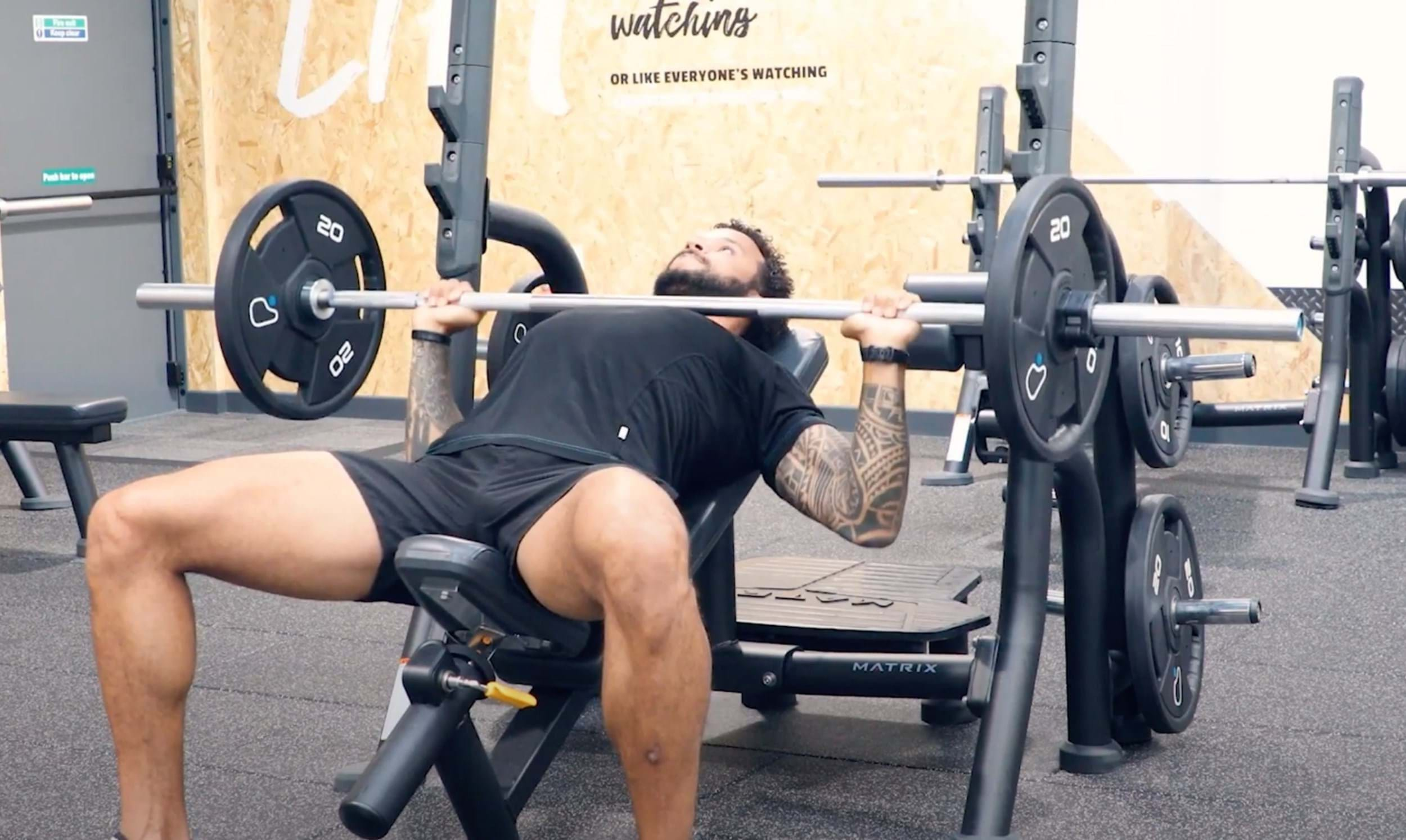Barbell Bench Press
What Is A Barbell Bench Press?

The barbell bench press is arguably the most popular of the bench-pressing movements. Using a barbell and a bench, this exercise challenges the performer to lower a barbell to their chest before extending the arms to press it back up again.
While the main focus of this exercise is the chest muscles, the barbell bench press activates the pectorals, triceps and deltoids, and works the core. The barbell bench press is one of the three main movements that make up a powerlifting competition, therefore it's a real test that will challenge you to showcase your upper body strength.
Check out some other chest press variations: barbell incline bench press, dumbbell bench press, incline dumbbell press, close grip bench press, decline dumbbell bench press
Commonly Asked Questions On Barbell Bench Press
The barbell bench press targets both heads of the pec major, with further assistance from the triceps and anterior deltoids, and is great for building strength and muscle mass.
It is also a movement that can challenge maximum upper body strength. While suitable to be used in high rep ranges, the barbell bench is used in powerlifting competitions to test competitors one rep max.
As one of the big three lifts, the barbell bench press is suitable for the beginner and the advanced to improve power and pectoral strength.
The barbell bench press is effective in building the strength and size of the pecs, and can help to improve pushing power. It’s an excellent upper body exercise suitable for most goals.
The barbell bench press is good for enhancing chest strength and can help with muscle hypertrophy, but it should not be considered the only bench press worth doing.
For example, using dumbbells to bench often increases range of motion and may aid performers to understand the bench movement. Many will benefit from using both the dumbbell and barbell bench press.
Barbell Bench Press Tips
The set up of the barbell bench press is important to ensure that the correct muscles are being targeted and to reduce injury risks.
Poor form can put increased strain on the shoulders, which results in shoulder pain during the bench press. While the shoulders are involved in the bench press, the majority of the weight should be lifted by the pectorals. To avoid excess shoulder strain, pin the shoulder blades to the bench to create a slight arch in the back and ensure to tuck the elbows as you press rather than allowing them to flare outwards.
If you're new to bench pressing, it is advisable to build up prior strength using dumbbell bench pressing and other chest pressing variations. Once you're feeling confident, ask somebody to spot you or opt for a light weight that you know you can manage!
How To Do A Barbell Bench Press
Lying down on a bench, position yourself so that your eyes are in line with or behind the barbell.
Grip the barbell taking a grip a little wider than shoulder width.
Retract your shoulder blades by pulling your shoulder blades into the bench and pressing through your feet. This should create an arch in your lower back, which helps to protect the shoulder joint.
Take a deep breath in to unrack the barbell and hold it straight above you.
Commence the reps by lowering the barbell in line with your mid chest making sure you keep your elbows tucked rather than allowing them to flare outwards. Ensure to lower the barbell until it is nearly touching your chest.
Push through your arms, chest, and feet as you lift the barbell back up in an arc direction towards your chin.
If you’re not sure if any of the above exercises are suitable for you, please consult your doctor before you start it. Need guidance on how to perform the exercise? Ask a personal trainer at your gym.